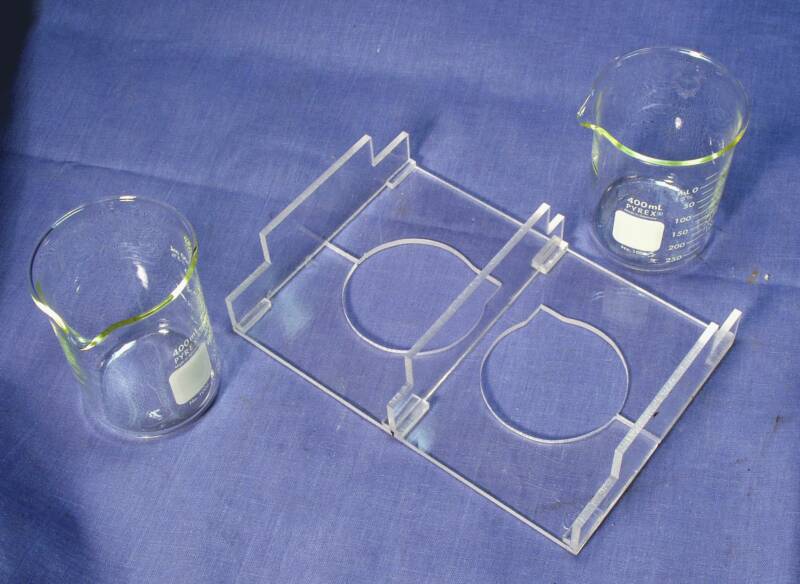

Here is my ultrasonic cleaner - working like new after 11 years.
I cut 1/4" thick acrylic plastic on a band saw to make a cradle to suspend the glass beakers about a half inch off the bottom of the tank.
The Pyrex beakers are available on the Web for about $6 for genuine Pyrex or about $4 for China knockoffs.
All of this might seem like a LOT of trouble but I assure you that it is not.
Each cleaning step only takes about 30 seconds in the cleaner. I have several 400 ml. And 600 ml.Pyrex glass beakers with the various cleaning agents and rinse water in them. (Thin glass beakers work much better than most plastic containers which absorb too much of the sonic energy.) These beakers are floated in the ultrasonic cleaner tank that is filled with plain water so you do not have to clean the tank of cleaners and solvents after each step. (Do not allow the beakers or any other relatively heavy objects to rest on the bottom of the tank. This puts too much stress on the transducers !!!)
It is easy to make a clear acrylic frame to hold your beakers like I did here.
The parts to be cleaned can be placed in a small mesh nylon bag for easy removal from the solutions. In this manner you can run several hundred nuts, screws, thumbnuts, tube contacts, switch points and the like through the process in much less than a half hour. The cleaning solutions can be saved so that you can be ready to begin cleaning at a moments notice. After mastering the process, I doubt seriously if you will ever want to revert to the use of "elbow grease".
Additional notes:
1) Ceramic parts can be cleaned very well in an ultrasonic cleaner. If you have un-glazed ceramic parts such as rheostat bases, these can be made to look brand new. After going thru the usual cleaning steps, add an additional step of bleaching the part with household bleach. Be sure to rinse the part again in the acid after the bleach step; this will quickly remove the bleach excess...
2) Plastic, Bakelite and other such materials do not clean very effectively with ultrasonics. My favorite for cleaning Bakelite knobs is plain old waterless hand cleaner like Goop or Go-Jo applied with an old toothbrush.
Robert Lozier, 600 E. Green St. Monroe NC 28112 USA (704)283-2638
Kd4hsh@carolina.rr.com
Follow this link to a PowerPoint 97 I did at the AWA Conference in Rochester in 2010. I have not yet updated it to work without my comments given in the talk but there is useful information it for you as it is now...